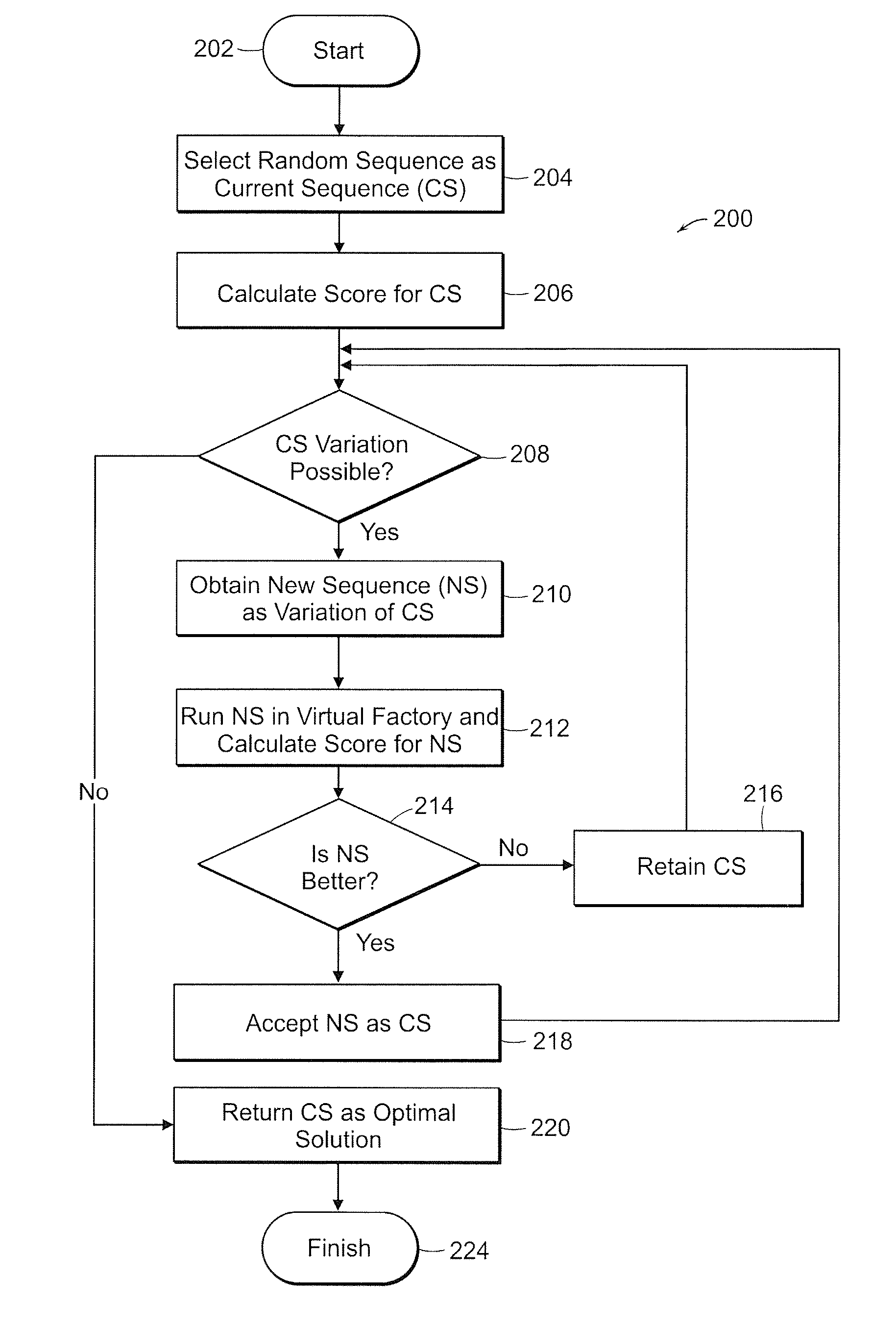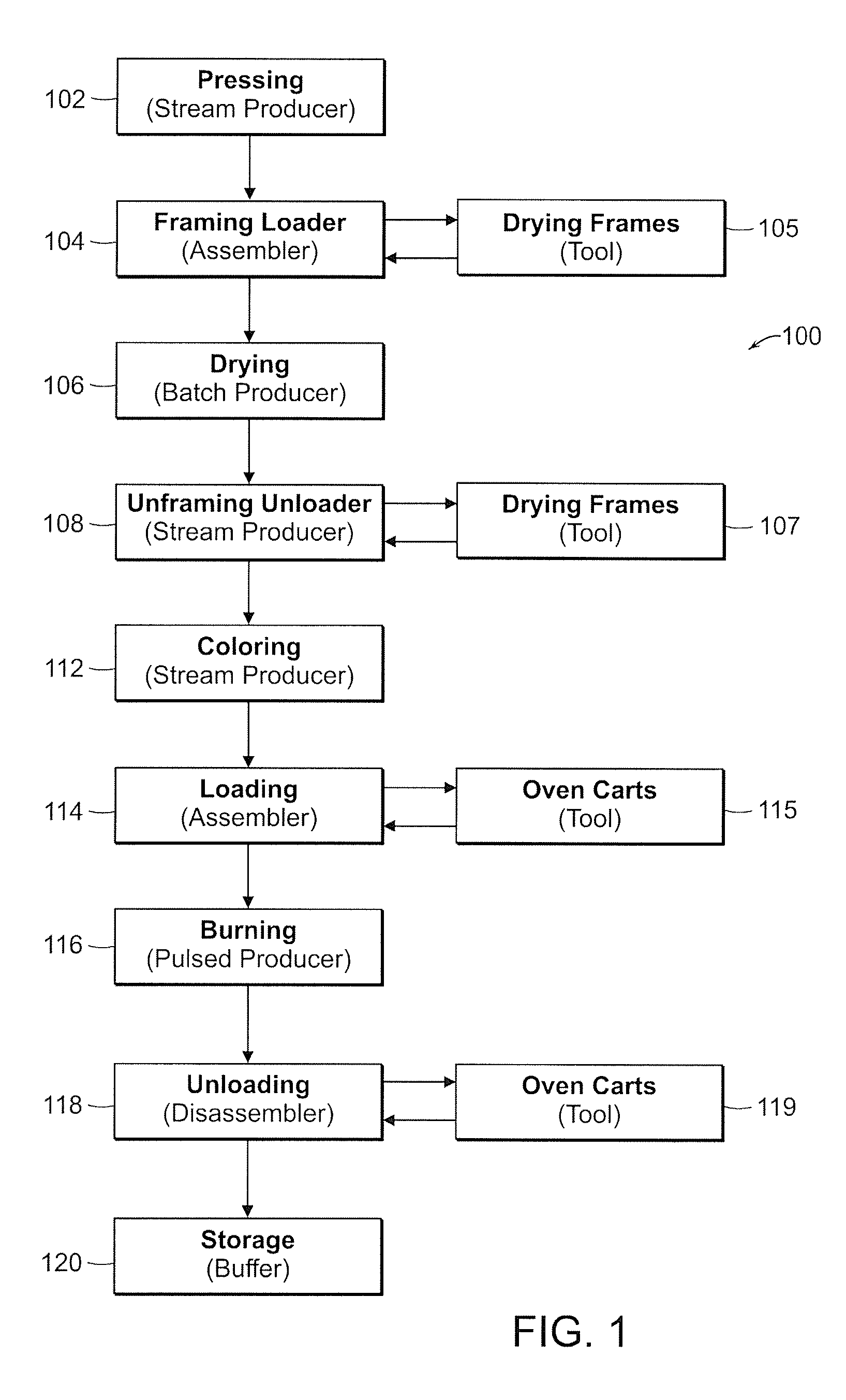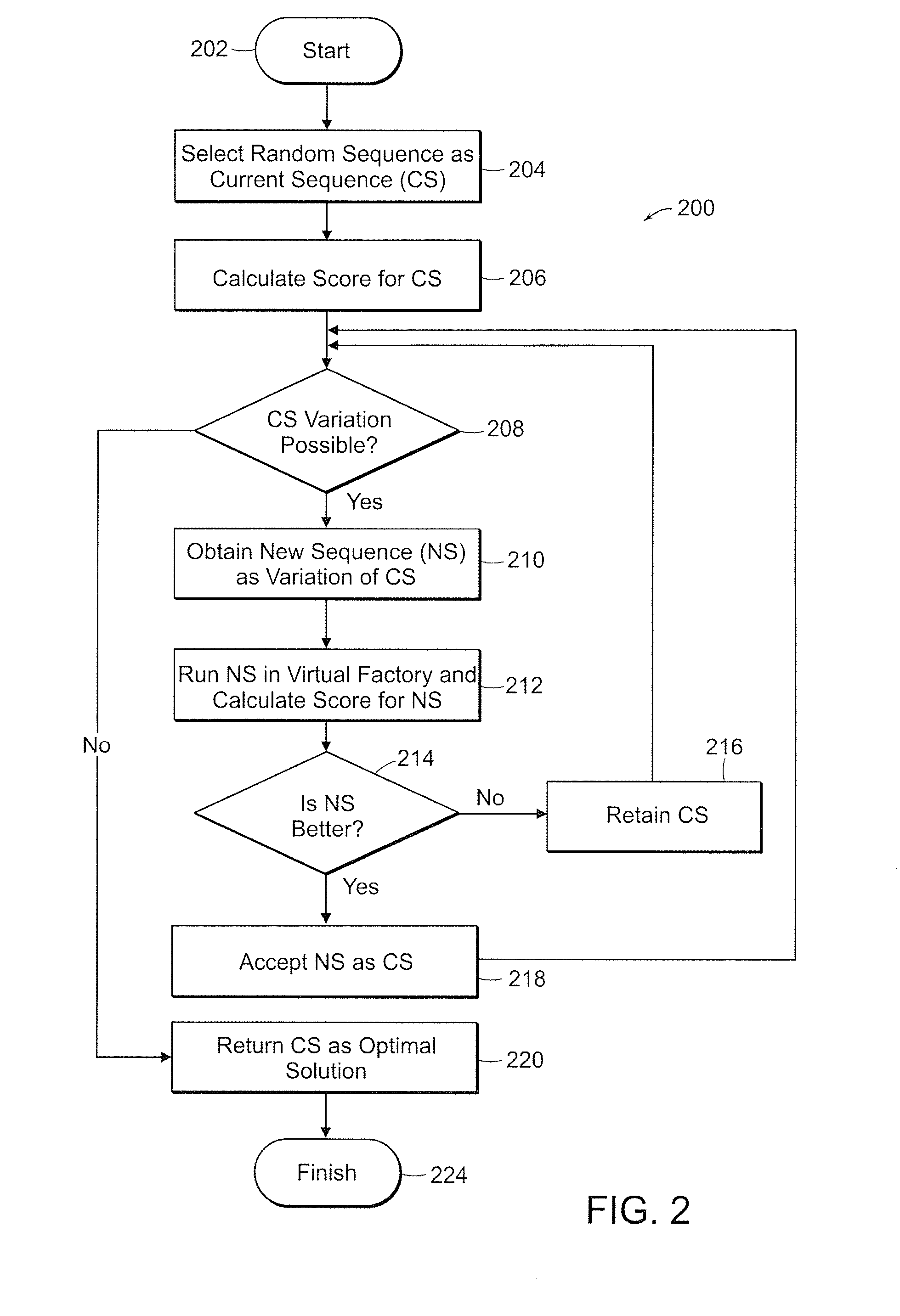System and method for the production of goods or products
a production system and technology for goods or products, applied in the direction of electric controllers, instruments, ignition automatic control, etc., can solve the problems of large number of changeovers, increased manufacturing costs and profits, and increased manufacturing costs
- Summary
- Abstract
- Description
- Claims
- Application Information
AI Technical Summary
Benefits of technology
Problems solved by technology
Method used
Image
Examples
Embodiment Construction
[0035]The present invention is a system and method for improving production planning that overcomes the problems associated with rules-based systems. The present invention performs computer-based modeling of the factory shop. This modeling simulates the factory shop floor to create a Virtual Factory. The Virtual Factory that is created provides the ability to simulate and assess any possible production sequence for determining optimization of production planning according to criteria established by the user. The simulation of a number of different possible sequences will provide the user with scoring to establish the optimal sequence based on that user-defined optimization criteria.
[0036]The dynamic environment of the Virtual Factory is defined according to the “state” of the factory shop floor and the “time evolution operator” for the factory shop floor. The “state” of the factory shop floor at any given time is defined by the location as well as current composition of equipment on...
PUM
 Login to View More
Login to View More Abstract
Description
Claims
Application Information
 Login to View More
Login to View More - R&D
- Intellectual Property
- Life Sciences
- Materials
- Tech Scout
- Unparalleled Data Quality
- Higher Quality Content
- 60% Fewer Hallucinations
Browse by: Latest US Patents, China's latest patents, Technical Efficacy Thesaurus, Application Domain, Technology Topic, Popular Technical Reports.
© 2025 PatSnap. All rights reserved.Legal|Privacy policy|Modern Slavery Act Transparency Statement|Sitemap|About US| Contact US: help@patsnap.com



